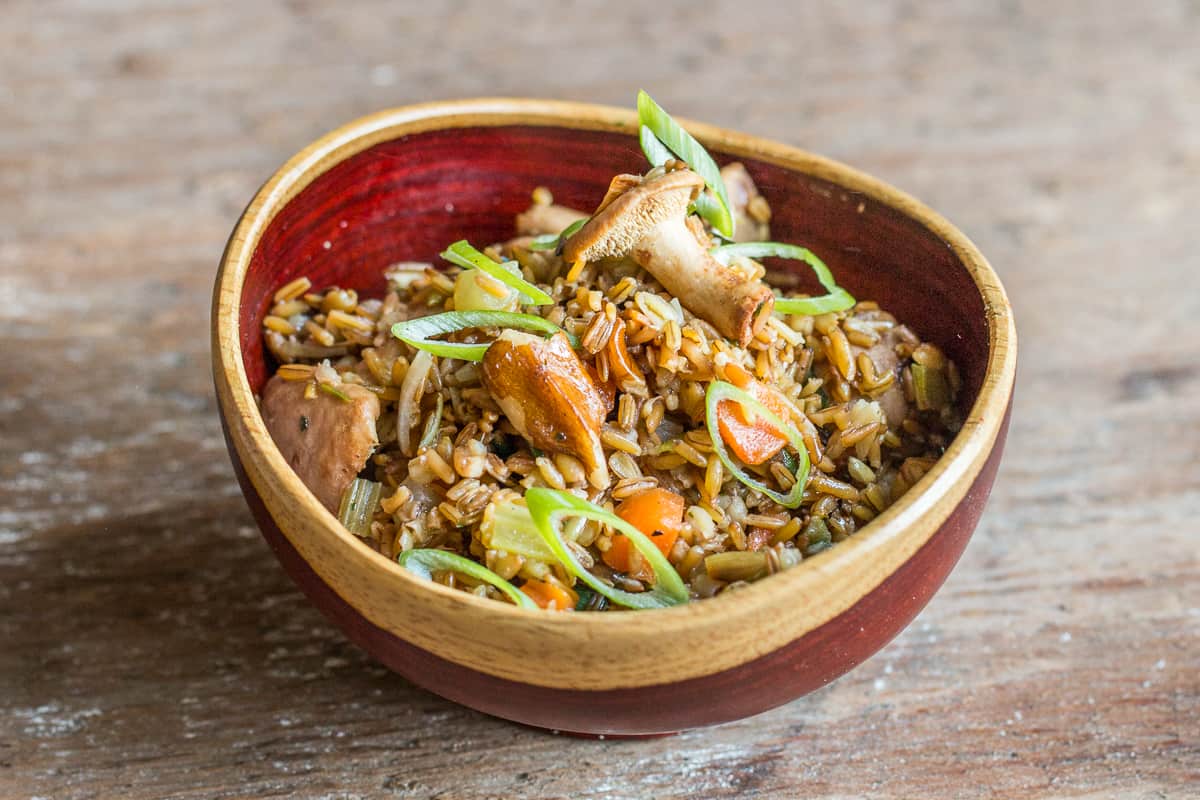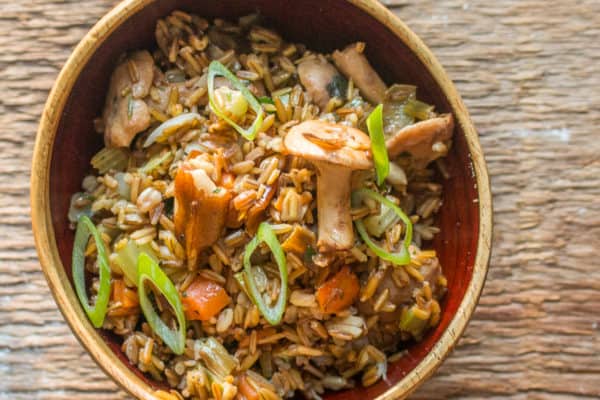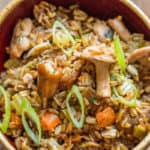Kernza, a crop being researched by the land institute in the University of Minnesota is a potentially groundbreaking game changing grain. Most grains, like wheat, corn and soy beans, need to be planted as an annual. Kernza is the opposite, a perennial grain that needs no planting, no tilling, and, because of that, actually replenishes topsoil. See more from The Land Institute here.

I was first introduced to it in the form of flour that I’m lucky enough to be able to purchase occasionally from Bakersfield, and I've been addicted to keeping some around ever since I heard about it. Kernza flour is difficult to work with for things like bread though, and, although it contains some gluten, it isn’t nearly as much as some heirloom wheats like Turkish red and Sonoran white carried by Sunrise Flour Mill, which also have lower gluten contents than, say, conventional all purpose flour.
This means that baking the with flour, if you want something like bread with a decent airy crumb, needs to be in proportions of about 50% with a traditional, higher protein flour.
The other thing Kernza adds to the mix is a certain texture the flour gives to a dough, it's a sort of fudgy, almost custardy feel that I think really shines in quick breads, things like pancakes, waffles, or the flatbreads I made for a few hundred people at the MWHF in 2019.
But, just like other grains, Kernza can also be cooked just like you would whole wheat berries, spelt, or wild rice—as a loose grain for salads, soups, or quick sautés and stir frys. While I like the fudgy texture kernza flour gives to baked goods, right now I’ve been partial to using it in salads or pilafs to show off the unique shape and texture, especially if I’m serving it to first timers.
It’s smaller and more thin than spelt or wheat berries, and, as a definite bonus, is also more tender than either of the other two. For a simple example of how it could be used, I made a little kernza salad to take with me on my recent pilgrimage to harvest praire turnips in South Dakota with members of the Standing Rock Lakota tribe.
It’s really simple, you cook the kernza in some stock with aromatics, then toss with mushrooms, herbs and toasted nuts. I used hedgehog mushrooms and butternuts (white walnuts), but you could use whatever combo of nuts, seeds and shrooms you like. It’s a filling, portable meal—just the kind of thing I like to keep in a backpack to eat in the middle of the field for lunch, or in this case, the middle of the prairie digging timpsila/prairie turnips.

More
The Forager's Guide to Hedgehog Mushrooms
Vegan or Vegetarian Mushroom Recipes
Kernza Salad with Butternuts and Hedgehog Mushrooms
Equipment
- 1 2 quart sauce pot
- 1 large skillet
Ingredients
Kernza
- 1 cup whole kernza berries
- 2 cups water
- Small chunk each of carrot onion, celery
- Small handful crumbled dried mushrooms, or generous pinch mushroom powder
Salad
- ¼ cup butternuts black walnuts or other nuts, lightly toasted
- 1 scant cup gently sautéed hedgehog or other mushrooms or use mushroom conserve
- 6 oz small diced carrot, onion, and celery
- 4-5 green onions, sliced
- 1 tablespoon chopped fresh bergamot Monarda fistulosa or other fresh herbs you like
- Kosher salt and fresh ground black pepper
- Good tasting oil such as sunflower, hickory nut, or olive
- Dash of apple cider vinegar
Instructions
- Lightly toast the kernza in a skillet for a few minutes until you can just smell it. Bring the kernza and water to a simmer with the remaining kernza ingredients, turn the heat to low, cover, and cook until the kernza is just tender and most of the water is absorbed. Discard the vegetables.
- Meanwhile, sweat the diced vegetables in a good glug of oil, slowly, until they start to brown along the edges, about 20 minutes.
- Toss the vegetables with the still hot kernza, mushrooms, herbs, and green onions double check the seasoning, then adjust with salt, pepper, vinegar and oil.
- If you use pickled mushrooms, you may want to rinse them depending on how much vinegar is in your recipe. My conserve can be added straight to the grain salad.


Lila Salls
I tried this and brought it to a potluck. I thought the idea of lightly “toasting” the grain in the pan at the beginning was great. I didn’t have all the ingredients, so I had to substitute some others, but people at the potluck liked it. I also enjoyed some of the instructions like use a “good glug” I understand that.
Alan Bergo
Glad it worked for you Lila. Yes, this salad, as it contains a number of pretty obscure ingredients, is just an idea, a template to use as a guide with whatever you have. Thanks for cooking with Kernza. Where did you get yours?